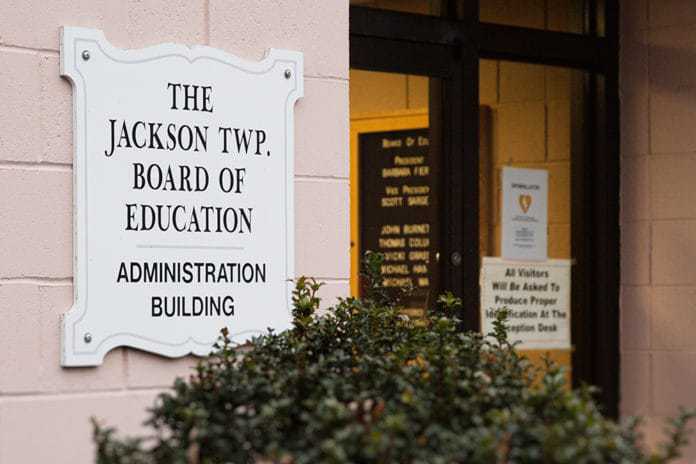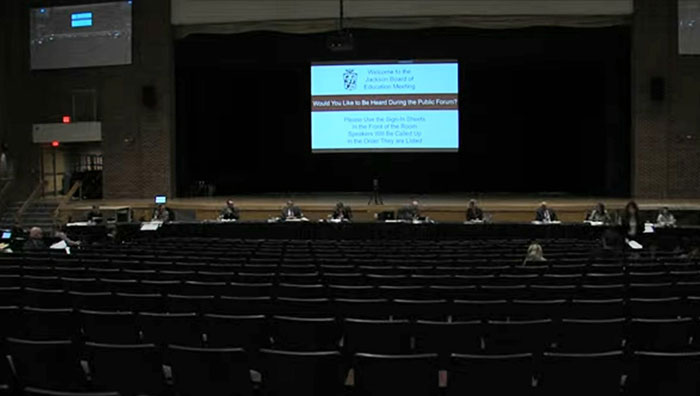
JACKSON – A reductions in state aid is the biggest challenge in the budget that will be presented for the 2022-23 school year, said Superintendent Nicole Pormilli and Business Administrator Michelle Richardson.
The tentative budget that was presented at a recent Board of Education meeting – and posted on the district’s website – is still being worked on. It will be finalized before the public hearing on April 27.
“This tentative budget allows us to maintain our programs. Our priority is always our programs and students. This budget maintains investments in our curriculum,” which includes technology, extracurricular programs and maintaining class size, the superintendent said.
She added, however, “it does not allow for the district to make needed capital improvements nor does it allow the district to expand on programs significantly. This district has been facing cuts (from the state) for several years now through the S-2 process that was put into place by our State Department of Education.”
S-2 was a law that redistributed state aid from largely suburban districts with shrinking enrollment to mostly urban districts with growing enrollment. The cuts were stretched over a schedule of seven years. However, districts only know a ballpark of how much a cut is going to be.
Pormilli explained, “we were anticipating a $4.1 million cut for the 2022-23 school year and instead received a $4.6 million cut. It is upsetting and it angers me that during a time in our state where we know our students have had great challenges both academically and mental health-wise, that this cut would continue.”
“I can’t understand why it couldn’t at least put on pause,” Pormilli added. “We are scheduled to receive another $2.5 million cut and finally the last of the seven years, $806,000 cut to the budget with an overall prediction of $19.5 million.”
The superintendent called the state aid reductions “very discouraging. I know the public and the Board feels as well that it just doesn’t make sense.” The school district is the fifth highest among districts in terms of aid lost. “Unbelievably unacceptable.”
Beyond the S-2 budgetary obstacles Pormilli spoke of the regular yearly challenges that developing the spending plan involves. “We have special circumstances in Jackson that we have been trying to advocate about on the state level. We are challenged with contract obligations, raises and rising costs, increasing insurance premiums.”
She mentioned the increase in transportation costs for out of district students. “We got hit very hard because of the driver shortage. We also have the legislation that passed last year in regards to less staff contributions to their insurance. We have increases in our non-English learners. These are unique challenges we have out in front of us.”

Pormilli noted that the district has received state and federal funds over the last year and a half. “That money is helping us to plug the holes right now in our budget but it is one and done money. It is money that you spend it, it is gone and it is not coming back. We are using it to offset things like supplies for our schools, cleaning, for professional development and extending our programs for students.
“We are using it for technology purchases and for expanding extracurricular things but that money does come to an end. It is very difficult to use that for staff because it is not sustainable,” Pormilli added.
The superintendent said the impact of the budget was the loss of eight positions through attrition, retirement and change in force. “It will keep our class sizes – not reduce our class sizes. In perspective over the last few years and particularly last year, we lost 37 positions so this is an improvement and it is not all teachers it is across the board in different areas.”
Tier one capital projects were cut. They are put on a priority list and Pormilli said if additional savings were discovered a tier one project might be restored. Funds for school supplies in each building also took a hit.
Richardson explained the tax impact and went over the numbers. She spoke about the tax levy which is the amount raised in taxes for the school district. The budget contains a 2 percent general fund tax levy increase. “The general fund tax levy for 2022-23, we calculated to be $91,445,509 which is a $1.7 million increase.”
“State aid – we are calculating that at $36,026,107. It is a decrease of $10,352,511 in state aid. A decrease of 22 percent,” Richardson said.
She said the school tax increase will mean $26 a year more for the average homeowner. The average home is valued at $329,862.







